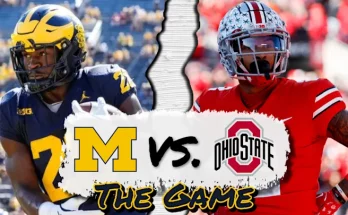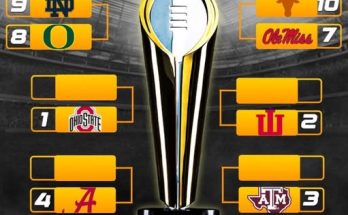The Los Angeles Lakers have entered the 2025-26 season with a renewed sense of optimism and a roster brimming with potential, yet the persistent whispers and rumors surrounding their rotation have only intensified the intrigue for fans and analysts alike. With the off-season maneuvers, acquisitions, and internal developments, speculation about the Lakers’ projected 10-man rotation and minute distribution has become one of the most discussed topics in NBA circles. As the Lakers seek to maximize their championship window with LeBron James, Anthony Davis, and a mix of complementary pieces, understanding how Frank Vogel—or whichever head coach is calling the shots this season—plans to allocate minutes is crucial. The balance between veteran leadership, emerging talent, and situational flexibility will likely define the team’s success.
Starting at the point guard position, Russell Westbrook continues to be a central figure in the Lakers’ backcourt. Rumors suggest that the Lakers might lean on a slightly reduced workload for Westbrook compared to previous seasons, given his history of fluctuating efficiency and injury concerns. Analysts project that he could average around 28 to 30 minutes per game, allowing him to maintain his energy in critical stretches while giving the team opportunities to explore alternative lineups. His ability to initiate offense and create plays off the dribble remains invaluable, and this distribution could also accommodate the development of a secondary ball-handler like Austin Reaves, who is rumored to see an increased role in the rotation. Reaves, with his versatility and shooting prowess, could receive 22 to 25 minutes per game, functioning both as a floor spacer and a reliable facilitator, which could open up the offense for LeBron and Davis to operate with greater freedom.
In the shooting guard and small forward spots, LeBron James remains the Lakers’ centerpiece, and rumors suggest the team is intent on managing his minutes carefully to extend his effectiveness throughout the season. Projections indicate LeBron could log approximately 34 to 36 minutes per contest, slightly down from previous peaks but still substantial given his status as the team’s primary playmaker and defensive anchor. Complementing LeBron is Anthony Davis, whose health continues to be a critical variable. The Lakers are rumored to be aiming for a rotation that keeps Davis on the floor for about 32 to 34 minutes per game, balancing his dominant presence in the paint with the need to avoid fatigue and potential re-injury. Davis’ ability to protect the rim, secure rebounds, and score efficiently from both inside and mid-range makes his minutes a central factor in any rotation discussion.
Rounding out the frontcourt, the Lakers’ acquisitions in free agency and trades have generated speculation about the exact distribution of minutes among key forwards and centers. For example, someone like Jarred Vanderbilt, known for his defensive intensity and energy, is rumored to be a crucial role player who could log 20 to 24 minutes per game. Vanderbilt’s ability to guard multiple positions and run the floor complements the Lakers’ strategy of leveraging athleticism and versatility. On the offensive end, Carmelo Anthony, still effective as a shooter and floor spacer, could see 12 to 15 minutes per game, particularly in situations requiring veteran poise or spot-up scoring. His presence in the rotation allows the Lakers to rest their stars while maintaining scoring options.
The center position has also been the subject of considerable rumor and speculation. With the Lakers experimenting with big-man depth, names like Dwight Howard and newly acquired prospects could see fluctuating minutes depending on matchups and game flow. Howard’s projected allocation may hover around 10 to 15 minutes per game, primarily in defensive sets and short bursts to provide rim protection and rebounding. Meanwhile, emerging talents from the bench could supplement the rotation for an additional 8 to 12 minutes, giving the team flexibility to go small or large as required. This approach is critical for a team aiming to compete at a high level while managing the wear and tear of an 82-game season plus playoff intensity.
Bench depth has become increasingly vital in the Lakers’ strategy, with rumors highlighting the importance of a reliable 10-man rotation that balances starters’ minutes with bench contributions. Players like Malik Beasley, if retained, could contribute significant scoring in short stretches, potentially logging 18 to 22 minutes per game. Similarly, a young forward like Max Christie might be entrusted with 10 to 14 minutes, offering energy, defensive potential, and the ability to stretch the floor. Analysts note that these projected minute distributions are not static and will likely fluctuate based on matchup considerations, health, and the team’s desire to optimize performance during back-to-back games or heavy travel stretches.
One of the more intriguing rumors involves the Lakers experimenting with LeBron in a more hybrid role at times, which could slightly adjust minute allocations for other wing players. By strategically using LeBron as a point forward, the Lakers can create additional ball-handling and playmaking options, reducing the reliance on traditional guards in certain lineups. This would potentially free up minutes for someone like Reaves or Beasley while still maintaining LeBron’s effectiveness. Likewise, Davis’ minutes may be staggered in tandem with the rotations of bigs like Vanderbilt or Howard, ensuring that the Lakers retain rim protection and rebounding presence without overtaxing their star. Analysts have speculated that the team could also employ small-ball lineups in key situations, which could see forwards logging minutes at multiple positions depending on the floor spacing required.
The Lakers’ approach to rotation management is expected to be highly dynamic, with multiple permutations possible throughout the game. According to rumors, early-season experimentation will determine optimal pairings, particularly when integrating new acquisitions and adjusting for health concerns. Lineup flexibility is a central theme, as the team seeks to adapt to the evolving challenges of the Western Conference, where matchups with athletic wings and dominant big men could necessitate adjustments on the fly. Coaches are rumored to be prioritizing the preservation of LeBron and Davis’ legs while leveraging the depth of the roster to maintain competitiveness across all four quarters.
Defensively, the Lakers’ rotation is designed to maximize versatility. With multiple players capable of switching and covering different positions, the distribution of minutes is not just about offense but also about creating sustainable defensive matchups. Vanderbilt, Howard, and other versatile forwards and centers are projected to be key components in defensive schemes, with their minutes aligned to neutralize opposing stars. Meanwhile, bench contributors are expected to inject energy and maintain pressure, allowing the starters to rest without a significant drop-off in defensive efficiency. This strategic minute allocation is seen as critical, especially in high-stakes games where matchups and individual defensive assignments could determine the outcome.
The projected 10-man rotation also considers the chemistry and intangibles that veteran players bring. LeBron, Davis, and other seasoned professionals contribute leadership, clutch decision-making, and situational awareness, all of which factor into how minutes are assigned. The rumored distribution reflects a balance between giving younger players meaningful opportunities and ensuring that experienced players are on the floor during critical moments. Analysts suggest that the rotation might be fluid early in the season, allowing the coaching staff to assess how different lineups perform against various opponents before settling into more consistent minute allocations.
From a statistical perspective, the Lakers’ rumored rotation highlights the importance of efficiency over sheer volume of minutes. By carefully managing playing time, the team aims to optimize production per possession while minimizing fatigue-related dips in performance. This approach is particularly relevant for LeBron and Davis, whose contributions are most impactful when they are fresh and capable of exerting their elite abilities fully. Bench players are expected to complement this approach by providing bursts of energy, scoring, and defensive intensity without requiring extended minutes that could compromise performance or health.
The Lakers’ rotation strategy also aligns with the broader trend in the NBA of load management and advanced minute optimization. Teams increasingly rely on data-driven insights to determine how to allocate minutes based on matchups, pace, and player condition. Rumors indicate that the Lakers are embracing this approach, with individualized minute targets, staggered rest periods, and rotational flexibility designed to maximize both short-term performance and long-term durability. This methodology is particularly pertinent for a team that is championship-contending but also cognizant of the grind of a full NBA season.
As the Lakers’ season unfolds, the actual minute distribution may differ from initial projections, with in-season adjustments responding to injuries, performance trends, and opponent-specific strategies. The rumored 10-man rotation provides a framework, but adaptability will likely define the Lakers’ success. Fans and analysts alike are paying close attention to how minutes are allocated in early games, as these patterns could reveal the team’s strategic priorities and potential areas of experimentation. The interplay between starters’ consistency and bench contributions will be a key storyline throughout the season, as the Lakers navigate the challenges of maintaining competitiveness in a highly competitive Western Conference.



